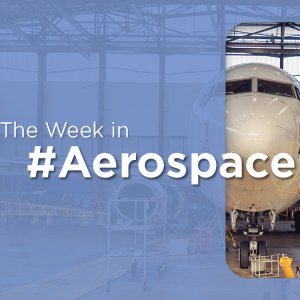Solid Supplier Development = Solid Nearshoring

STORY INLINE POST
The new opportunities for doing business in America — specifically, nearshoring — require the restructuring of the supply chain built in the past, and the development of a more logical, practical, and economical chain.
This collaboration certainly goes way beyond what has been done so far. The need is clear: how to promote the integration of the country’s Tier 3 and 4 within the aerospace industry?
To succeed, we must develop a completely different approach to all the elements of the equation.
First, the potential suppliers will have the opportunity to gain experience in a world-class supply system, and to develop capabilities, certifications, business models and technology based on the demand they face. Understanding all of this is far from easy, or risk- free. I am convinced the first stage is to develop the mindset for the journey, and to understand that the “big wheel” of the aerospace business in which they are enrolling their business turns very slowly. Once in the industry, the investment return takes more time, but the possibility of better contracts, and continuity, is considerable. Also, once you are in, other potential buyers consider you right away and the competitor’s risk is as hard as your own developed capacity and experience allows it . Therefore, the name of the game is to think for the long term.
These businesses should also consider that during 2020 and 2021, several companies had to abandon the market, or change strategies, which means there are market gaps waiting to be filled.
Here is what is most needed: mindset, preparation, training to the existing levels of the organization, documentation that helps with today’s operations and which provide the basis for future growth, some investment, certainly, and good communication skills. It is also necessary to create synergies and uncover what can be done for and what is needed by potential customers in order to develop a shared strategy of “supplier development.”.
Second, potential customers: these are the OEMs, Tier 1 and Tier 2 elements of the aerospace supply chain.
These elements, I believe, should also rethink, or remodel, their processes according to the circumstances of today. The supply base requires hands-on participation, where these players can be guided with a continuous program that allows the learning process to flow, and finally develops the level of industry required to support the sector’s needs. They need to train on the certification elements, negotiate economies of scale and prices with the certification bodies for the suppliers in the process.
Financially, there is also an opportunity to help companies by providing international interest rates on loans since the local rates would represent 12 percent to 16 percent on top of prices if financed even by the usual banks. This is a necessary burden to keep suppliers operational.
Another topic of discussion are material prices. Small vendors logically have little leverage to negotiate prices, deliveries and attention from raw material suppliers. Economies of scale affect the final price on products where raw materials represent a very significant portion of the total costs of manufacturing; this leads to a non-competitive position. The proposal is to follow best practices like Boeing does on metal products, where vendors can get metal materials on a base price given to them directly. This is beneficial for all parties. OEMs have a solid baseline to get prices and competitiveness from internal vendors, more so than from those based externally, while vendors have a solid supplier for raw materials at the most competitive price and can focus on internal strategies and processes.
Raw material suppliers expand markets with nearshoring by having more local demand. On top of all this, the proximity of both countries (US and Mexico) should help reduce lead times, freight costs, etc., creating the perfect mix for a delicious economical cocktail.
Third, and a less considered factor, is the government.
Regulations, laws and conditions that facilitate the process during the supplier’s development and during the commercial relationship is extremely important. We do need clear and consistent rules that respect international treaties (like USMCA) and we need to develop agile customs processes, revise the regulations for transport companies, facilitate the creation of new companies and to register as IMMEX, provide tax returns in a timely manner to maintain positive cash flow, support training programs, and support technical schools (these are all public) and universities. We also need a very well-planned and focused promotion strategy. This will lead to much better coordination of demand and supply of talent for the industry (as I mentioned in my previous article).
These elements can start impacting real supplier “development,” rather than just searching for suppliers or holding business meetings. The result is a more competitive environment with better possibilities for the success and growth of all parties.
Honeywell, and lately Spirit, have demonstrated their will and action for this development to happen. Visiting and compiling companies with strategies that will lead to this expected result demonstrates that the idea has been understood and that the players are participating. We need to continue this team effort and maintain the pace, to deliver better conditions for the aerospace industry.
The more we do it and promote the same strategy, the quicker and better nearshoring for aerospace will happen. We all are the solution.























